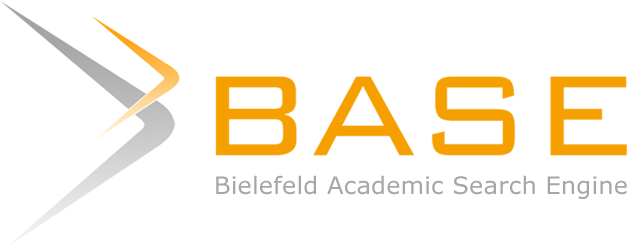Menu
Publications
2025
2024
2023
2022
2021
2020
2019
2018
2017
2016
2015
2014
2013
2012
2011
2010
2009
2008
2007
2006
2005
2004
2003
2002
2001
Editor-in-Chief

Nikiforov
Vladimir O.
D.Sc., Prof.
Partners
doi: 10.17586/2226-1494-2021-21-6-866-871
Different III-V semiconductor nanowires with quantum dots on silicon: growth by molecular-beam epitaxy and properties
Read the full article
Article in English
For citation:
Abstract
For citation:
Reznik R.R., Kotlyar K.P., Shtrom I.V., Samsonenko Yu.B., Khrebtov A.I., Cirlin G.E. Different III-V semiconductor nanowires with quantum dots on silicon: growth by molecular-beam epitaxy and properties. Scientific and Technical Journal of Information Technologies, Mechanics and Optics, 2021, vol. 21, no. 6, pp. 866–871. doi: 10.17586/2226-1494-2021-21-6-866-871
Abstract
Recently, III-V semiconductor nanostructures of reduced dimension attract more and more interest of researchers for the new generation devices creation. Combinations of nanostructures with different dimensions are of special interest, among them, for example, quantum dots in the body of nanowires. Such quantum dotsʼ size and location control is strictly determined by the growth parameters. As a result of effective relaxation of mechanical stresses on the lateral faces of nanowires, the integration of hybrid nanostructures with silicon technology is possible. In this work, we have demonstrated the possibility of GaP nanowires with GaAs quantum dots and AlGaP nanowires with InGaP quantum dots growth on silicon by molecular-beam epitaxy. The physical properties of the selected nanowires have been investigated. Growth experiments were performed using Riber Compact 21 setup, which is equipped, in addition to the growth chamber, with a vacuum-aligned chamber for gold deposition (metallization chamber). The morphological properties of the obtained nanostructures were studied by scanning electron microscopy. The optical properties of the nanostructures were investigated by the photoluminescence method. The analyses of morphological properties showed that GaP nanowires with GaAs quantum dots were formed predominantly in the <111> direction, in contrast to AlGaP nanowires with InGaP quantum dots, which in some cases changed the growth direction. The reason for the change in the direction of growth of nanowires may be the participation of indium in the growth process. With a sufficient content of indium in the gold catalyst droplet, such mixed droplet can etch the facets at the top of the nanowires, thereby descending to the side of the nanowires and changing the direction of nanowires growth. The studies of the optical properties of the grown nanostructures showed that the photoluminescence signal from InGaP quantum dots in AlGaP nanowires is observed at a temperature of –263 °C with a peak maximum of around 550 nm. Thus, the synthesized nanostructures are promising for optoelectronic applications, in particular, for creating sources of single-photons.
Keywords: semiconductors, III-V, nanowires, quantum dots, silicon, morphology, photoluminescence
Acknowledgements. The samples were grown under support of Ministry of Science and Higher Education of the Russian Federation, research project No. 2019-1442. Morphological and optical properties measurements were done under support of Russian Foundation for Basic Research (RFBR) (project No 18-02-40006 mega
References
Acknowledgements. The samples were grown under support of Ministry of Science and Higher Education of the Russian Federation, research project No. 2019-1442. Morphological and optical properties measurements were done under support of Russian Foundation for Basic Research (RFBR) (project No 18-02-40006 mega
References
-
Dubrovskii V.G., Cirlin G.E., Ustinov V.M. Semiconductor nanowhiskers: Synthesis, properties, and applications. Semiconductors, 2009, vol. 43, no. 12, pp. 1539–1584. https://doi.org/10.1134/S106378260912001X
-
Glas F. Critical dimensions for the plastic relaxation of strained axial heterostructures in free-standing nanowires. Physical Review B, 2006, vol. 74, no. 12, pp. 121302. https://doi.org/10.1103/PhysRevB.74.121302
-
Chuang L.C., Moewe M., Chase C., Kobayashi N.P., Chang-Hasnain C., Crankshaw S. Critical diameter for III-V nanowires grown on lattice-mismatched substrates. Applied Physics Letters, 2007, vol. 90, no. 4, pp. 043115. https://doi.org/10.1063/1.2436655
-
Moewe M., Chuang L.C., Dubrovskii V.G., Chang-Hasnain C. Growth mechanisms and crystallographic structure of InP nanowires on lattice-mismatched substrates. Journal of Applied Physics, 2008, vol. 104, no. 4, pp. 044313. https://doi.org/10.1063/1.2968345
-
Hyun J.K., Zhang S., Lauhon L.J. Nanowire heterostructures. Annual Review of Materials Research, 2013, vol. 43, pp. 451–479. https://doi.org/10.1146/annurev-matsci-071312-121659
-
Ng K.W., Ko W.S., Tran T-T.D., Chen R., Nazarenko M.V., Lu F., Dubrovskii V.G., Kamp M., Forchel A., Chang-Hasnain C.J. Unconventional growth mechanism for monolithic integration of III–V on silicon. ACS Nano, 2013, vol. 7, no. 1, pp. 100–107. https://doi.org/10.1021/nn3028166
-
Leandro L., Gunnarsson C.P., Reznik R., Jöns K.D., Shtrom I., Khrebtov A., Kasama T., Zwiller V., Cirlin G., Akopian N. Nanowire quantum dots tuned to atomic resonances. Nano Letters, 2018, vol. 18, no. 11, pp. 7217–7221. https://doi.org/10.1021/acs.nanolett.8b03363
-
Leandro L., Reznik R., Clement J.D., Repän J., Reynolds M., Ubyivovk E.V., Shtrom I.V., Cirlin G., Akopian N. Wurtzite AlGaAs nanowires. Scientific Reports, 2020, vol. 10, no. 1, pp. 735. https://doi.org/10.1038/s41598-020-57563-0
-
Cirlin G.E., Reznik R.R., Shtrom I.V., Khrebtov A.I., Soshnikov I.P., Kukushkin S.A., Leandro L., Kasama T., Akopian N. AlGaAs and AlGaAs/GaAs/AlGaAs nanowires grown by molecular beam epitaxy on silicon substrates. Journal of Physics D: Applied Physics, 2017, vol. 50, no. 48, pp. 484003. https://doi.org/10.1088/1361-6463/aa9169
-
Cirlin G.E., Reznik R.R., Shtrom I.V., Khrebtov A.I., Samsonenko Yu.B., Kukushkin S.A., Kasama T., Akopian N., Leonardo L. Hybrid GaAs/AlGaAs Nanowire-Quantum dot system for single photon sources. Semiconductors, 2018, vol. 52, no. 4, pp. 462–464. https://doi.org/10.1134/S1063782618040103
-
Cirlin G.E., Shtrom I.V., Reznik R.R., Samsonenko Yu.B., Khrebtov A.I., Bouravleuv A.D., Soshnikov I.P. Hybrid AlGaAs/GaAs/AlGaAs nanowires with a quantum dot grown by molecular beam epitaxy on silicon. Semiconductors, 2016, vol. 50, no. 11, pp. 1421–1424. https://doi.org/10.1134/S1063782616110257
-
Reznik R.R., Shtrom I.V., Samsonenko Yu.B., Khrebtov A.I., Soshnikov I.P., Cirlin G.E. The dependence of the wavelength on MBE growth parameters of GaAs quantum dot in AlGaAs NWs on Si (111) substrate. Journal of Physics: Conference Series, 2017, vol. 929, no. 1, pp. 012047. https://doi.org/10.1088/1742-6596/929/1/012047
-
Leandro L., Hastrup J., Reznik R., Cirlin G., Akopian N. Resonant excitation of nanowire quantum dots. npj Quantum Information, 2020, vol. 6, no. 1, pp. 93. https://doi.org/10.1038/s41534-020-00323-9
-
Reznik R.R., Cirlin G.E., Shtrom I.V., Khrebtov A.I., Soshnikov I.P., Kryzhanovskaya N.V., Moiseev E.I., Zhukov A.E. Coherent growth of InP/InAsP/InP nanowires on a Si (111) surface by molecular-beam epitaxy. Technical Physics Letters, 2018, vol. 44, no. 2, pp. 112–114. https://doi.org/10.1134/S1063785018020116
-
Cirlin G.E., Reznik R.R., Samsonenko Yu.B., Khrebtov A.I., Kotlyar K.P., Ilkiv I.V., Soshnikov I.P., Kirilenko D.A., Kryzhanovskaya N.V. Phosphorus-based nanowires grown by molecular-beam epitaxy on silicon. Semiconductors, 2018, vol. 52, no. 11, pp. 1416–1419. https://doi.org/10.1134/S1063782618110258
-
Wang J., Plissard S.R., Verheijen M.A., Feiner L.-F., Cavalli A., Bakkers E.P. Reversible switching of InP nanowire growth direction by catalyst engineering. Nano Letters, 2013, vol. 13, no. 8, pp. 3802–3806. https://doi.org/10.1021/nl401767b
























